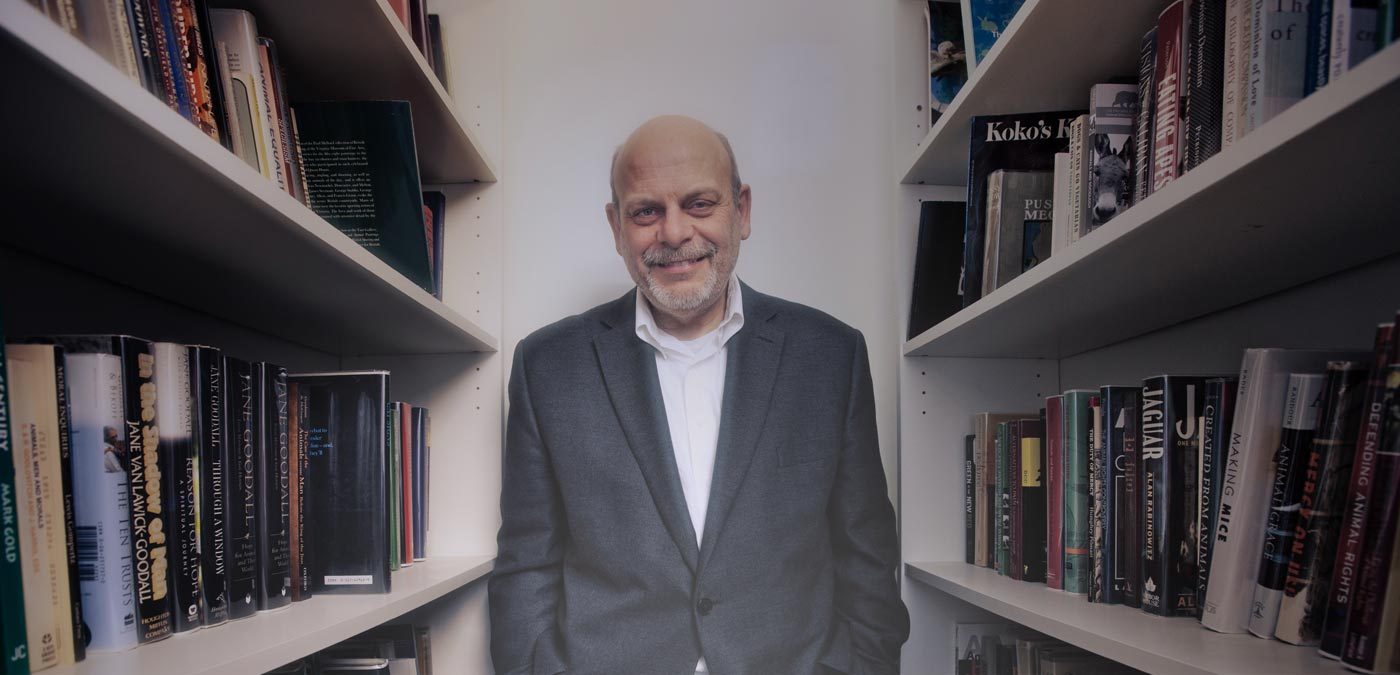World Day for Laboratory Animals 1984
Thirty years ago in London’s Trafalgar Square, I was the lead organiser of a national demonstration to recognise World Day for Laboratory Animals, when I was Campaigns Officer at the British Union for the Abolition of Vivisection.
The protest was at that point in time the world’s largest animal rights demonstration with nine thousand people, with the greatest number ever involved–six hundred–in street theatre.
Under BUAV’s hallmark slogan of ‘Every Six Seconds an Animal Dies in a British Laboratory’, we constructed a large doorway, which was painted to represent an entrance to a vivisection laboratory. We dressed a couple of people as vivisectors, with bloodstained white coats, and stationed them by the doorway. From the plinth at the Square, we announced that for the ninety minutes of speeches and music a tape loop would play the sound of a bell chiming every six seconds. Each time the bell rang, large numbers were turned on the stage to count to six hundred while one of the vivisectors took a protester through the door, ‘killed’ them in front of the plinth, and laid them on the ground as dead animals. Eventually, the area was filled with 600 ‘dead animals’.

At the 1984 World Day for Laboratory Animals demonstration in London’s Trafalgar Square, I help Sue Croshaw speak out as a disabled person against animal experimentation by holding the microphone stand.
This protest was part of a coalition, the Mobilisation of Animals, which opposed the government’s proposed legislation to replace the Cruelty to Animals Act 1876. The coalition consisted of Animal Aid, Scottish Anti-Vivisection Society, National Anti-Vivisection Society, and BUAV. We opposed the proposed law because it wouldn’t even ban particularly egregious examples of animal experimentation—such as using animals for testing the negative effects of tobacco and alcohol, and the toxicity of cosmetics, as well as employing animals in research for military and psychological purposes. These experiments had been the focus of the 1979 and 1983 General Election Coordinating Committee for Animal Protection campaigns I helped to lead. We organised a lobby of Parliament, which was attended by seven hundred people, and a rally, emceed by myself, with sympathetic Members of Parliament of all political parties, and others.
Although the government ignored our demands on the Animals (Scientific Procedures) Act, I believe BUAV and its companion organisations succeeded in highlighting what needed to be done when the new legislation was enforced. For example, the U.K. government subsequently banned the testing of cosmetics on animals in 1997 and the LD50 oral toxicity test in 2001. In 2003, the European Union agreed to a membership-wide ban on cosmetics animal testing by 2013.
The Talon Conspiracy, an online archive preserving the history of protest movements for animal rights and environmentalism, offers an opportunity to read back copies of BUAV’s ‘campaigning newspaper,’ The Liberator, which I co-edited. Here’s the link to the issue which included a report on the Trafalgar Square demonstration.












